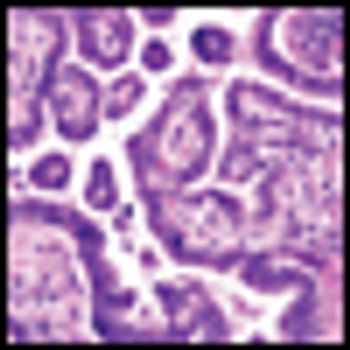
More than 50% of patients with advanced breast or prostate cancer have identifiable bone metastasis, and 30% to 40% of patients with non–small-cell lung cancer ultimately develop metastases to bone.[1,2]

Your AI-Trained Oncology Knowledge Connection!


More than 50% of patients with advanced breast or prostate cancer have identifiable bone metastasis, and 30% to 40% of patients with non–small-cell lung cancer ultimately develop metastases to bone.[1,2]

During investigation of an episode of self-limiting abdominal pain, a 63-year-old Caucasian female never-smoker was found to have an asymptomatic right lower lobe pulmonary mass. A positron-emission tomography/computed tomography (PET/CT) scan revealed the right lower lobe mass to be 25 × 32 mm with a standardized uptake value (SUV) of 10.2, without evidence of hilar or mediastinal lymphadenopathy or of distant metastases.

A substantial number of cancer patients turn to unconventional agents used as anticancer therapies. However, “alternative cures” are unproved and may be harmful. They are not supported by clinical research and they can jeopardize patients’ lives, especially when patients delay needed care. Amygdalin, promoted as a popular alternative cancer cure for over 40 years, is used by many cancer patients. No solid data supports its effectiveness.

Developments in the understanding of multiple myeloma biology have revolutionized our approach to therapy, leading to meaningful improvements in survival.[1] It is becoming increasingly clear that like all tumors, myeloma is a heterogeneous disorder, with different cytogenetic abnormalities, disease kinetics, response to therapy, and prognosis.[2,3] Therefore, a “one size fits all” approach to therapy is no longer tenable for this disease.[4,5] In parallel with this novel understanding of disease biology has been the discovery of novel classes of agents such as the immunomodulatory agents (IMiDs)[6,7] and proteasome inhibitors (eg, bortezomib [Velcade])[8] that alone have significant activity against the disease and more so when used in combination with other agents.

Lung cancer is the leading cause of cancer death throughout the United States.[1] Despite massive efforts, tobacco consumption continues to grow, with a large and predictable impact on premature mortality across the globe.[2]

New treatments and an improved biologic understanding of why malignant plasma cells are able to survive have dramatically changed the natural history of multiple myeloma. Along with these new treatments, therapeutic options for patients at each stage of their disease have become a collection of confusing consonants. Combinations such as Rd,[1] CRd,[2] VD,[3] VTD,[4] VRD,[5] CyBorD,[6] PAD,[7] and BiRD[8] all produce impressive response rates in the induction therapy setting, and can be used for patients with relapsed disease as well.

In this issue of ONCOLOGY, Dingli and Rajkumar provide an expert review of novel therapies in multiple myeloma. As their work underscores, the rapid clinical development of the immunomodulatory drugs-specifically thalidomide (Thalomid) and lenalidomide (Revlimid), and the proteasome inhibitor bortezomib (Velcade)-has changed the therapeutic landscape of this disease, resulting in significant improvements in patient outcomes.[1]